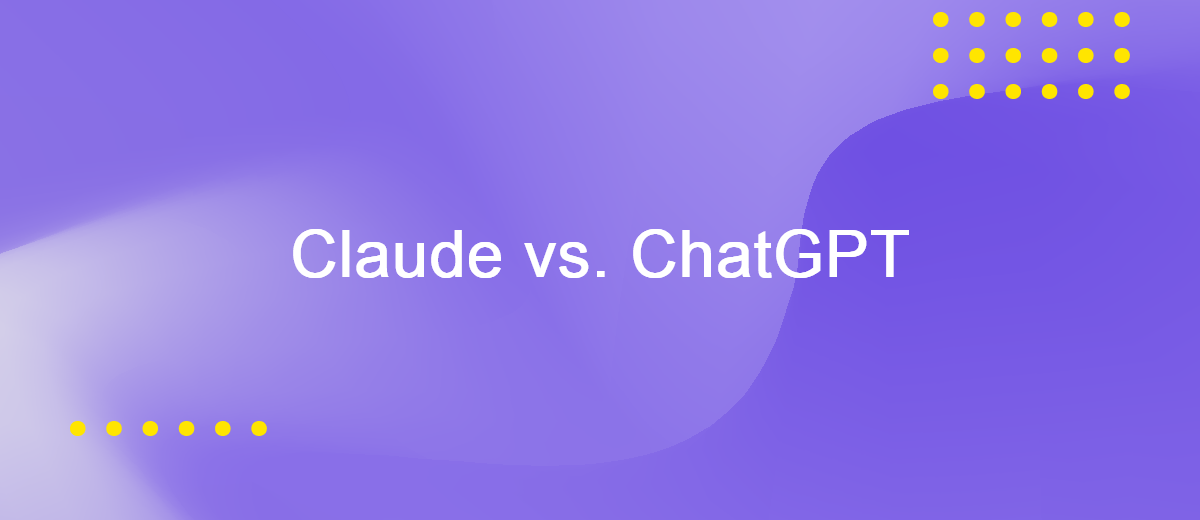Claude vs. ChatGPT: Comparing AI Chatbots
ChatGPT by OpenAI is a recognized leader in the AI-enabled chatbot industry. However, its competitors are not standing still. They are persistently improving their products, striving to increase their presence in the rapidly developing market. One of the most promising solutions is Claude by Anthropic, which positions itself as the most humane AI chatbot. In this article, we will present a comparison of the advanced versions of ChatGPT vs Claude: which is better, more powerful, more convenient, and more accessible to the mass user.
Language Models Behind ChatGPT and Claude
With the development of generative artificial intelligence, choosing the right chatbot is becoming increasingly important. The ChatGPT vs Claude comparison helps users understand the technologies behind these platforms and the opportunities they offer.
Both chatbots are equipped with advanced language models that can analyze data, generate text, and solve complex problems. However, their architecture, learning methods, and functional features differ significantly, making them strong in different use cases.
ChatGPT
ChatGPT was introduced by OpenAI in November 2022. It was the first mass-market AI chatbot and a true game-changer in the industry. The developers regularly update their product by uploading the latest versions of the language models (LLMs) they have released. At the time of writing, the bot supports a number of the latest LLMs:
- GPT-4o. Release date: May 2024. This is a general-purpose model that can handle complex and large-scale tasks with multiple stages. Works with text, images, and videos. Supports multimodal input (text with images and more).
- GPT-4o mini. Release date: July 2024. A more lightweight version of GPT-4o, it requires fewer resources and operates faster. In addition, this model is more affordable than the flagship. It is ideal for quickly executing a limited range of tasks with minimal resource consumption.
- o1. The preview version was released in September 2024, and the full version was released in December 2024. This is an improved LLM with a new dataset and optimization algorithm. It has improved capabilities in programming, scientific research, and solving logical problems.
- o1-mini. Release date: September 2024. The junior version of the o1 model works in accelerated mode. It costs 80% less to use compared to the standard LLM. At the same time, it copes worse with certain tasks.
- o3-mini. Release date: January 2025. This is the first model in the new o3 series, created with the latest advancements from OpenAI. It offers improved performance and accuracy with significantly lower computational resource consumption. The main advantages of o3-mini are faster response time and increased efficiency in processing user queries, especially in real-time. It is designed for business solutions, automation, and personalized AI assistants.
As we can see, OpenAI's model lineup is updated quite dynamically. We recommend periodically checking for new technologies and current pricing. Additionally, please note that our AI TOOLS module includes models by OpenAI. You can set up integrations with ChatGPT to make the most of artificial intelligence capabilities.
Claude
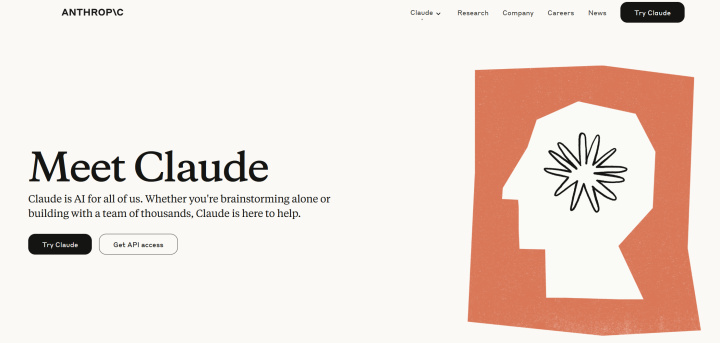
The AI chatbot Claude was released by Anthropic in March 2023. During its creation, the developers paid attention not only to the intellectual capabilities of the program but also to its safety for users. When training the Claude language model, they embedded the so-called “Constitution” with a set of universal moral norms and principles.
As of February 2025, the chatbot is based on LLM Claude 3.5, which is available in three versions:
- Claude 3.5 Sonnet. Release date: June 2024. This is the smartest version of Claude at the time of release, outperforming the latest ChatGPT, Gemini, and Llama models in a range of benchmarks. Highly effective at complex workflows, coding, code generation, image mining, and chart analysis.
- Claude 3.5 Haiku. Release date: October 2024. This is the fastest and most affordable LLM. It follows instructions more accurately and uses built-in tools. It is most effective for developing interactive chatbots, code generation, real-time content analysis, data extraction, and labeling.
- Claude 3.5 Opus. At the time of writing, it is in development; the release date is unknown. According to forecasts, this model will become the most powerful and productive in the Claude 3.5 line.
Create integrations by leveraging the Claude chatbot through the ApiX-Drive online connector interface. Combine it with various services and optimize the utilization of cutting-edge AI model capabilities.
Features and Capabilities
When choosing between Claude and ChatGPT, users pay attention not only to the language models but also to the functionality of both chatbots. These platforms can process text, program, work with images, and perform complex analytical tasks. Meanwhile, their approaches to content generation, creativity, coding, and integrations differ significantly. We invite you to familiarize yourself with the key features of ChatGPT and Claude to find out what their strengths and weaknesses are.
Text Processing and Generation
Comparing the potential of Claude vs ChatGPT for writing and text editing, it is worth noting the outstanding abilities of the chatbot from Anthropic. Claude generates more natural, authentic, and readable content, conveying the intended style and tone more accurately. An important role is played by the expanded volume of its context window (200,000 tokens), allowing it to analyze materials up to 150,000 words, while the context window of ChatGPT is limited to 128,000 tokens.
The wide context window allows Claude to work more efficiently with long texts, maintaining a logical and coherent narrative. It is especially useful for processing large data sets, writing detailed articles, editing complex documents, and research papers. ChatGPT compensates for the smaller context window with better response structure and more precise corrections in texts, making it suitable for short and focused tasks.
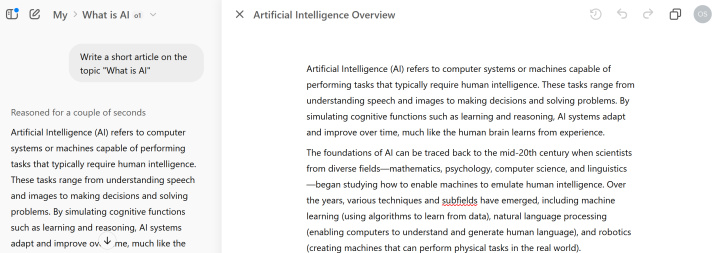
Creativity and Problem-Solving
Both chatbots are good at simple tasks, but their approaches differ when dealing with complex queries. ChatGPT is highly effective at mathematical calculations, solving complex equations, and logical problems. It also performs well in searching for and analyzing specific information, providing accurate answers to factual questions.
On the other hand, Claude excels at proofreading and editing complex and lengthy texts, including scientific materials and technical documentation. It is able to maintain context and ensure coherence of the text. In addition, Claude often generates more natural and "human" responses, especially in creative tasks.
In the creative writing space, ChatGPT is used by content creators as an ideation partner, story consultant, research assistant, and editor. It helps them brainstorm ideas, find the right words, refine thoughts, and provide feedback on structure and flow. Claude also helps with creative and collaborative writing. It provides ample opportunity for idea generation and strategic decision-making.
Programming
In terms of Claude vs ChatGPT for coding capabilities, both chatbots show high results. However, there are some differences in their performance.
According to the HumanEval test, Claude 3.5 Sonnet scored 93.7%, making it one of the leaders in programming among AI models. On the other hand, GPT-4o mini scored 87.2%. This confirms the high level of the OpenAI model, even in its compact version.
Claude is often praised for its code accuracy and optimization, as well as its ability to preserve context in complex projects. In turn, ChatGPT demonstrates excellent results in solving algorithmic problems, automating routine coding, and analyzing errors. Moreover, OpenAI offers closer integration of ChatGPT with development tools. This makes it convenient for professional programmers.
The choice between these models depends on the specifics of the tasks. Claude, as a coding assistant, is useful for beginners and non-tech users. They will especially like its Artifacts tool. ChatGPT is less friendly to newbies in the field of coding but can be useful for experienced developers to automate debugging, code analysis, and solve complex problems.
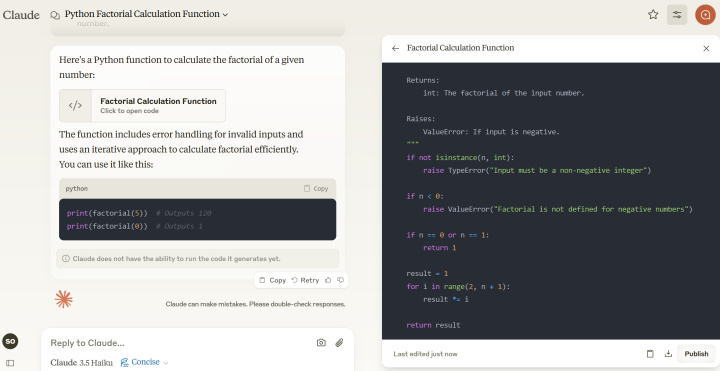
Analysis and Generation of Images and Videos
Both services have image analysis capabilities, but their functionality in this area is not the same. Claude cannot generate images, but it can analyze visual data, describe the content, and interpret text in images. This makes it useful for working with diagrams, screenshots, and structured information.
ChatGPT is integrated with the DALL-E 3 neural network, which allows it to generate images based on text queries, as well as edit them using the Inpainting function. In addition, thanks to the Sora model, ChatGPT is able to create high-quality videos based on text descriptions. Sora is currently still in the testing phase, during which OpenAI is actively improving the realism of object movement in the generated videos.
Thus, ChatGPT provides more extensive capabilities for working with visual content, including image generation and editing, as well as video creation. Claude is focused on image analysis and information extraction.
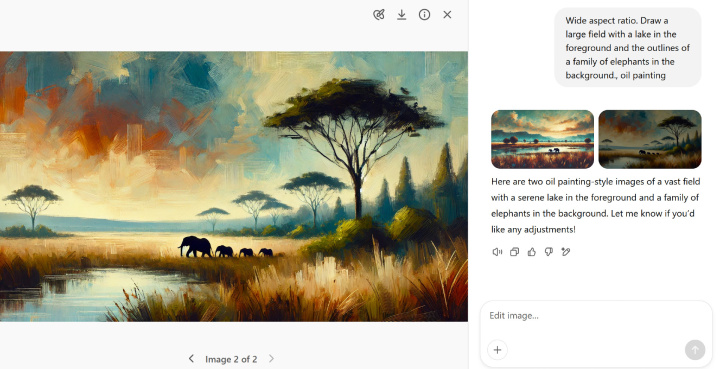
Specific Functions
ChatGPT has a number of unique features that differentiate it from Claude. One of the key features is the integration with the search engine. This allows to get relevant information from the web in real time. ChatGPT supports voice mode. It accepts voice queries and provides responses in the form of speech, improving user interaction.
An important feature of ChatGPT is the presence of the GPT Store marketplace, with millions of custom GPT models tailored for various tasks and areas. Here, users can train and customize their own chatbots with the functionality they need without coding skills or third-party tools. Finally, it can be used as a convenient task manager and calendar planner with advanced features.
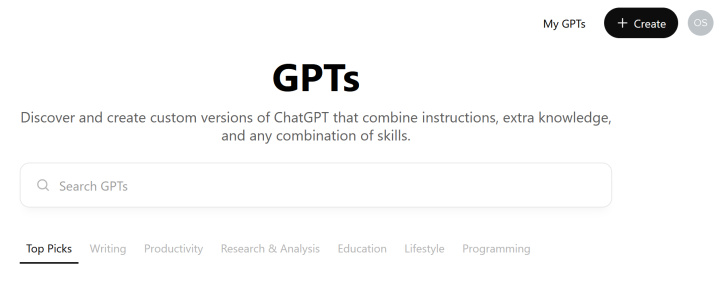
Claude is not without its unique capabilities. One of them is the advanced "Computer use" function. It allows Claude to interact with the computer environment, performing actions such as moving the cursor, entering text, and navigating the interface. This significantly expands its use in automating tasks.
Performance and Accuracy
Performance and accuracy are the main aspects when comparing Claude vs ChatGPT. They determine the effectiveness of the models in real-world tasks. Both chatbots demonstrate high results in mathematics, logical reasoning, and data classification, but their performance varies significantly depending on the specific tests.
- Automate the work of an online store or landing
- Empower through integration
- Don't spend money on programmers and integrators
- Save time by automating routine tasks
ChatGPT outperforms its competitor in higher mathematics and the speed of processing complex calculations, while Claude shows better results in the speed of generating answers. Let's consider how both services cope with analytical tasks and which models provide the highest accuracy.
Higher Mathematics
The ChatGPT o1 Pro model has demonstrated high efficiency in solving complex mathematical problems. o1 Pro solved 83% of the problems in the International Mathematical Olympiad (IMO) qualification exam. The newest o3-mini model surpassed its predecessor o1. In Competition Math (AIME 2024), it scored 83.6%, whereas o1 only achieved 78.4%.
Claude 3.5 Sonnet is less accurate than its competitors in solving complex mathematical equations, achieving 78.3% (data from the official Anthropic website). At the same time, it easily copes with beginner and intermediate-level mathematical tasks.
Reasoning and Logic
According to Vellum AI, the OpenAI o1 model achieved 60% accuracy in logical reasoning tests, while Sonnet's Claude 3.5 achieved 56%. The difference is small, but the OpenAI o1 was still slightly more accurate.
In addition, the models approach solving logical problems differently. Claude 3.5 Sonnet copes better with the analysis of complex texts and contextual relationships, demonstrating more consistent reasoning in long dialogues. OpenAI o1 more often uses rigorous algorithmic methods and formal logical constructs, which gives it an advantage in solving mathematical puzzles and structured logical problems.
Thus, OpenAI o1 outperforms its competitor in formal logic and structured reasoning, while Claude 3.5 Sonnet is more effective in processing complex texts and contextual analysis. The choice of model depends on the types of logical problems you need to solve.
Classification
When comparing the performance of Claude vs ChatGPT-4o/o1 Pro in solving classification problems, all three models showed approximately the same results. The accuracy of the models was distributed as follows:
- Claude 3.5 Sonnet – 76%
- GPT-4o – 74%
- OpenAI o1 – 73%
Interestingly, a more detailed analysis revealed differences in key metrics:
- In terms of accuracy (Precision), GPT-4o was the leader with a score of 86%. It is preferable to use it for tasks where minimizing false positives is critical.
- In terms of recall (Recall), OpenAI o1 was the best, showing 82%. It is useful for cases where it is important to identify as many true positive examples as possible.
- In terms of F1-measure (balance between precision and recall), Claude 3.5 Sonnet came out on top with 77%. This makes it a universal choice for classification tasks.
Therefore, GPT-4o is best suited for situations where maximum precision is important, o1 is best suited for tasks requiring high recall, and Claude 3.5 Sonnet is a balanced solution for general-purpose use.
Bandwidth and Latency
In September 2024, an analysis was conducted on the Helicone AI platform to compare the models' performance on real-world benchmarks, including token generation speed and response time. During the test, OpenAI o1 demonstrated the highest throughput, generating an average of 92.94 tokens per second. Claude 3.5 Sonnet was only able to generate 74.87 tokens per second.
Despite its higher token generation speed, OpenAI o1 has significant response latency—an average of 39.4 seconds per request. For Claude 3.5 Sonnet, this figure is just 18.3 seconds. According to internal testing, the latest o3-mini model was 24% faster than its predecessor o1-mini. Now, OpenAI has a strong chance of catching up with its competitor in terms of speed.
At the moment, Claude responds faster in dialogue-based scenarios, while OpenAI o1 may be preferable for tasks requiring high computational power. The choice between the models depends on priorities.
User Experience and Interface
User experience is an important aspect when comparing Claude AI vs ChatGPT, as the ease of interaction with the chatbot affects productivity. Both services have intuitive web interfaces that do not require special skills to master.
The Claude interface has a minimalist design focused on working with text. The main window contains a dialog area, drop-down lists for choosing a model and style of writing, as well as buttons for uploading files and images. An additional convenient feature for developers is the Artifacts mode. It opens a separate window for the code, providing clarity and convenience when programming.
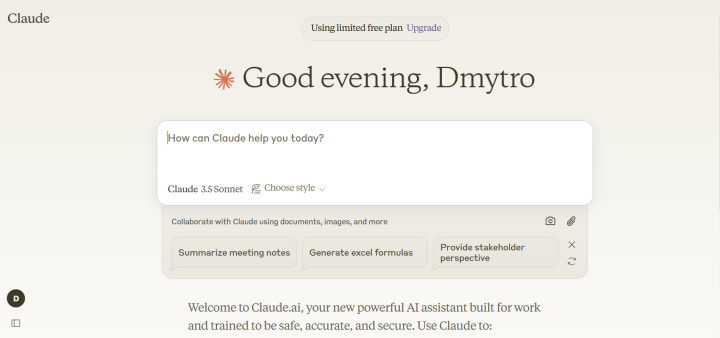
ChatGPT offers a more functional interface adapted to a wide range of tasks. In the center of the page, there is a dialog box with suggested queries, file upload options, and the ability to search for information on the Internet (Search mode). Additional tools such as DALL-E (image generation) and Sora (video generation) are placed in the sidebar. You can also see the chat history and a list of connected extensions there. At the top of the interface, there are buttons for selecting available LLMs and enabling the auto-clearing mode of history.
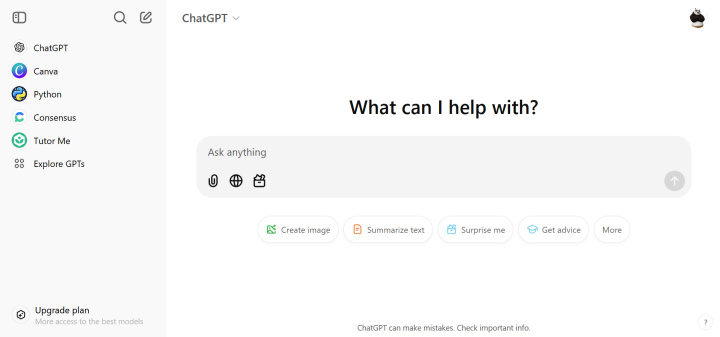
Overall, Claude offers a simplified interface with an emphasis on working with text and coding. ChatGPT provides broader functionality adapted for multimodal interaction and additional tools.
Mobile Applications
In the context of the ChatGPT vs Claude AI comparison, it is worth considering their mobile apps separately, as they provide accessibility and ease of use on the go. Both chatbots offer official apps for iOS and Android, allowing users to get quick answers, work on documents, and interact with the AI anytime, anywhere.
ChatGPT provides apps with the full functionality of the web version. They support voice input, file uploads, and integration with DALL-E and Sora tools. Moreover, they have a web search mode. This makes them useful for getting up-to-date information.
Claude AI, like its competitor, is available on mobile devices and offers similar functionality to the web version. One of its advantages is the analysis of uploaded documents and images directly in the application. This makes it convenient for users working with text and visual materials. At the same time, Claude's interface remains more minimalistic, focused on working with text.
Pricing and Accessibility
Both chatbots have flexible pricing with a wide range of plans for individuals and businesses. Let's look at the features of their free plans and compare the paid subscriptions, Claude Pro vs ChatGPT Plus.
For individual users, the OpenAI platform offers the following range of tariffs:
- Free – full access to GPT-4o mini, limited access to GPT-4o, standard voice mode, custom GPT, and basic file upload, data analysis, web search, and image generation capabilities.
- Plus ($20 per month) — all features of the Free plan, increased limits on text queries, file uploads, and image generation, advanced data analysis tools, the ability to test new features and create custom GPTs, limited access to o1 model.
- Pro ($200 per month) – includes all the features of the Plus plan, plus full access to GPT-4o, o1, o1 pro, advanced Sora features, a voice mode with advanced features, and increased video generation limits.
Additionally, ChatGPT has special plans for businesses:
- Team ($30 per month per user, from 2 users) – includes all the features of the Plus plan, increased limits on queries to GPT-4, GPT-4o, DALL-E, and other tools, limited access to o1, the ability to create and distribute custom GPTs, and an admin panel for managing a team.
- Enterprise (price is calculated individually and is available upon request) is an extended version of the Team plan, which additionally provides an enlarged context window, additional privacy settings, priority support, and account management from OpenAI.
Claude offers the following tariff plans:
- Free – standard bot functions via web interface and mobile applications for iOS and Android, document and image analysis, limited access to the Claude 3.5 Sonnet model.
- Pro ($20 per month) — all the features of Free, increased limits on text queries, file uploads, and data analysis, access to the latest models of Claude, the ability to work with projects for organizing documents and chats, priority access during peak loads, early access to new features.
- Team ($30 per month per user, minimum 5 users) – all Pro features, increased limits, centralized billing, team administration and management, ability to share chats between team members.
- Enterprise (price is calculated individually and is provided upon request) – all the capabilities of Team, extended limits, an enlarged context window, SSO (single sign-on) support, role and access rights management, audit logs, integration with enterprise tools such as GitHub.
Conclusion
So, Claude vs ChatGPT — which is better? It all depends on your goals, as both chatbots are aimed at different use cases.
ChatGPT is a versatile AI assistant with a wide range of functionality. It is suitable for business, content generation, coding, image and video generation. Internet access, integration with DALL-E and Sora, the GPT Store marketplace, and custom models make it a powerful tool for various fields.
Claude is ideal for text tasks, deep analytics, and working with large documents. With a 200,000-token context window, it is better at analyzing long texts, and the Artifacts feature makes it convenient for coding, especially for beginners.
Routine tasks take a lot of time from employees? Do they burn out, do not have enough working day for the main duties and important things? Do you understand that the only way out of this situation in modern realities is automation? Try Apix-Drive for free and make sure that the online connector in 5 minutes of setting up integration will remove a significant part of the routine from your life and free up time for you and your employees.
